

For all the time that it can take Blizzard to develop a game, they certainly have a history of hitting home runs. World of Warcraft took MMORPGs out of the basement and placed them on a pedestal so big that, just in case you forgot, there was a time where it inspired TV commercials with the likes of William Shatner and Mr. T. Last year, Hearthstone introduced collectible card games to a massive new audience. Traditionally, card games like Hearthstone existed largely in a physical aspect; they were a game to be played with a group of friends sitting at a table. Online variants existed and enjoyed their niche markets, but Hearthstone cast a much brighter light on the whole scene. And why wouldn’t people love it? Its formula is approachable for just about anyone, the game benefits from a solid foundation inspired by the forefathers of the genre, and the whole thing is wrapped up in a wonderfully zany package.
But that doesn’t mean Hearthstone doesn’t have its own set of downsides. It might have been the one to introduce you to the wonderful world of collectible and trading card games, but it doesn’t need to be where your foray into the genre ends. For all of its popularity, Hearthstone is also arguably too simple. The card selection is very limited at this point in time, which in turn creates only a handful of viable strategies. Furthermore, as new cards are released, most of the time all they do is upset the current metagame until things settle into the same stale strategies that everyone begins to become over reliant on. That’s a pretty harsh assessment, and while it may never come between you and the pure joy of Hearthstone, you might also be hunting for a better game to do battle in. Good news, we’ve rounded up some viable alternatives to Blizzard’s crazy card game that you should absolutely try out. Whether you’re looking for something new or just want to expand your horizons, here are several card games like Hearthstone.
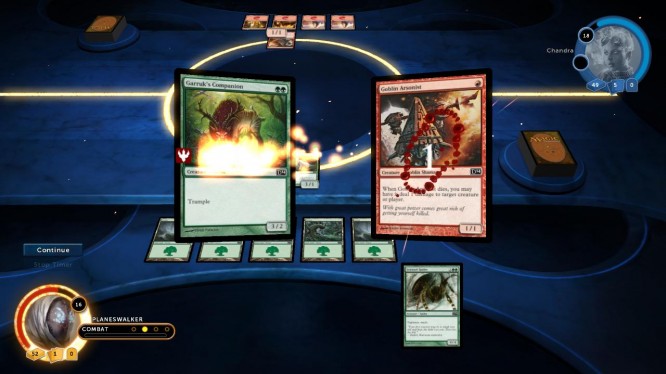
Why not kick things off with the most popular trading card game of all time? Magic: The Gathering has, for decades, dominated the scene with its breathtaking diversity, depth of mechanics, and constant expansions. While the game is traditionally played with physical cards (an experience you should not pass up), Magic has been expanding its offerings to new platforms readily over the past few years. Magic 2014 is, by and far, the most convenient way to experience and get a taste for what the game is all about.
First, I want to quickly address that while Magic 2015 does exist, the reception was much more negative than 2014. You’ll miss out on the new cards and features included in 2015, but Magic 2014 is a vastly superior product and, assuming you don’t care about being on the bleeding edge of Magic and just want to get a taste, Magic 2014 will do admirably.
Exploring the depths of what makes Magic tick would take a whole series of articles, but instead we will focus briefly on how it compares to Hearthstone. If you’ve ever felt that Hearthstone is great but overly simple in its design, Magic is the game for you. Hearthstone borrows many elements from Magic, but also cuts off much of its mass to make a game more readily approachable for newer players.

Probably one of the bigger changes a Hearthstone player would notice first is how mana is handled during a game. Unlike Hearthstone where everyone earns a set rate of one mana per turn, Magic uses a system where decks are built with cards that can be played once per turn to increase your mana pool called land cards. Mana is no longer a guaranteed resource and relies on properly seeding a deck with enough land cards as well as luck of the draw.
The other big change is the graveyard, a common card game system that Hearthstone scraps altogether. When cards are destroyed in Magic, they are sent to the graveyard where they can, with the right decks, be manipulated and even brought back into play. Some decks devise a strategy that entirely revolves around this idea.
If you like what Hearthstone is putting down but finding yourself wishing there was more of it, Magic 2014 (or just the physical card game in general) are the first places you should look. Like Hearthstone, Magic 2014 is available on just about every platform imaginable (including last-gen consoles) so whether you’re bored at work or on the train, Magic: The Gathering has you covered.

In the mephitic swamp of Kickstarter, Solforge is one of the few titles that has waded through the crowdfunding program and made it to the other side—with double its intended donations to boot. Since then, Solforge has been doing a pretty decent job of subverting the digital card game space with its ambitious design and robust features. It’s still early in development, however, and despite how playable it is, anyone going into it should expect a reasonable amount of rough edges and construction tape.
Perhaps one of the biggest boons to the Solforge name is the attachment of Richard Garfield, the man who created Magic: The Gathering. But don’t be fooled, despite its creator’s previous projects, Solforge is a very distinct card game that subverts and evolves many of the genre’s standard elements.
The game is pretty easy to learn but also very different from Hearthstone. The “field”, as it’s called, is divided into two halves, each housing five slots where you can play creature cards. These creatures will only do battle against the one opposite of it, or directly to the player, a far cry from Hearthstone allowing you to choose the victim of each attack. Furthermore, Solforge features a pretty unique leveling mechanic that sees your cards get stronger as the game progresses, making the stakes feel raised as the game escalates.
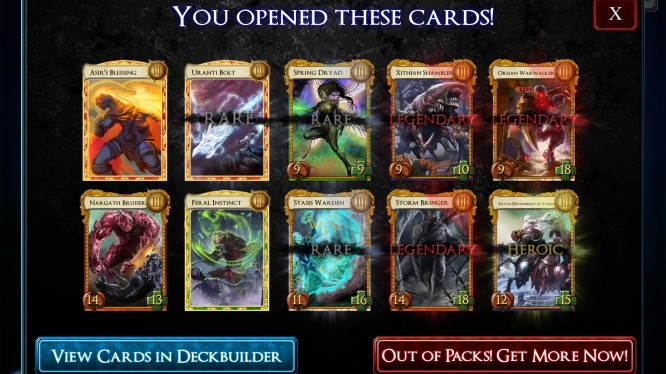
While there is a ton of depth, Solforge comes with a pretty major caveat: it is almost certainly pay-to-win. If you’re the type of person who likes to be competitive but you’re reluctant about dropping some money down, you’re going to have a rough time. Players who part with their cash will simply have a much bigger card pool to draw from and utilize in play, which will always put the game in their favor. Unlike other card games, where making the right move at the right time and player skill can help make up for a deficit in deck strength, Solforge will push you to spend money to feel viable.
That said, you’d be surprised how addictive Solforge can be. As long as you don’t get too attached to the idea of being world-class without spending a dime, it can be a lot of fun. You’ll progress at a much slower rate, but you will eventually start rounding out your card pool—much like Hearthstone. Just be prepared for a much steeper slope on the road to feeling competitive.
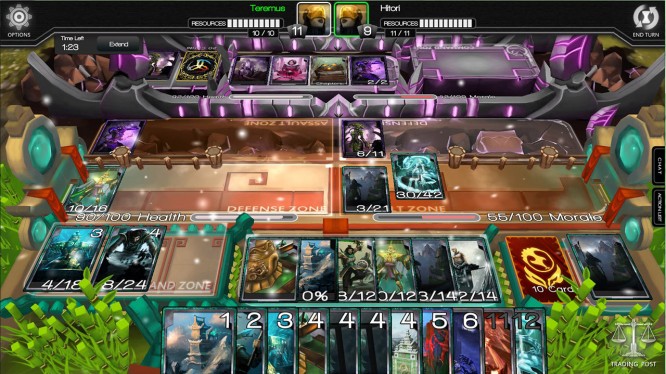
One of the bigger weaknesses of Hearthstone is that the all too important economy of trading cards is non-existent. Instead, players are merely required to shell out cash to purchase booster packs in hopes of acquiring the card they are looking for or disenchanting cards they already own to use their materials to build the desired card. It eliminates the whole trading element of a trading card game. Infinity Wars tackles this problem by offering players the ability to trade and sell their cards to other players. It also, unlike other games on this list, tries pretty hard to avoid the pay-to-win elements that all too easily plague the genre.
Another aspect that sets Infinity Wars out from the pack and makes it worth trying is just how unique and catching the lore and visuals of Infinity Wars is. Playing the campaign will flesh this background out even more as each faction is further detailed and their differences made more apparent.
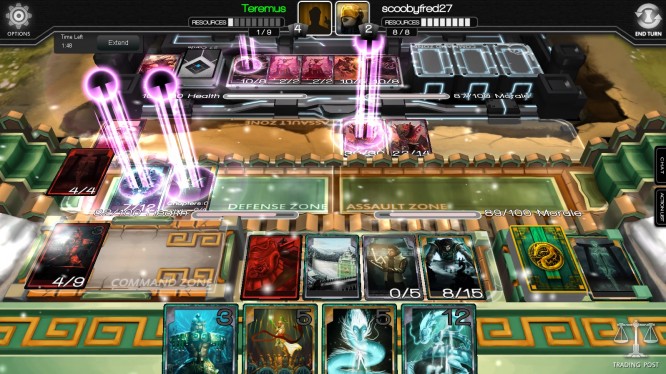
While Hearthstone and Solforge are both games that can feel heavily influenced by aspects of luck and the strength of a deck, Infinity Wars has a much greater emphasis on player skill and intuition. Both players plan their turns at the same time, and then the actions resolve simultaneously. Such a compelling system really stresses the importance of getting in your opponent’s head and playing proactively.
Right now, there isn’t a whole lot to complain about with Infinity Wars. But keep in mind that there have been some complaints of a fairly broken matchmaking system with rather unreliable servers. That said, you should absolutely still give this a try and see for yourself.
Above are only a few of the many alternatives to Hearthstone available on PC and mobile devices. In reality, while those chosen above were made because of how they subverted Hearthstone in ways that might be alluring to someone looking to jump off Blizzard’s money train, there are so many alternatives worth looking at. Card Hunter is a browser game that blends elements of RPGs into its gameplay, Hex: Shard of Fate is for those wanting a game with staggering depth, and Might and Magic: Duel of Champions might seem like a Magic ripoff, but I prefer to think of it more as a homage with some quirks of its own—best of which being set in the incredible Might and Magic universe.
If Hearthstone has been tiring you out lately or if you simply want to expand your horizons, checking out some of the suggestions on this list is a must. Virtually all of these games are free to play, so poking around and seeing which one grabs you really only requires a few hours of your time. As always, we want to know what your favorite Hearthstone alternatives are, so if you have any ideas or you disagree with any of the suggestions made, let us know in the comments!
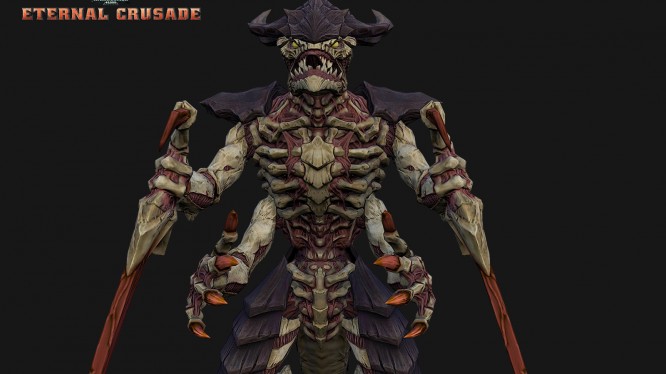
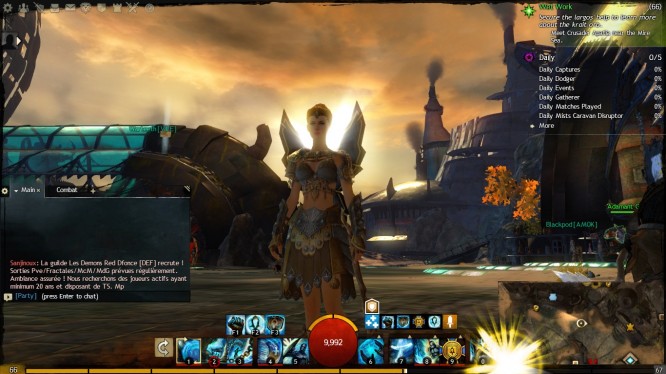
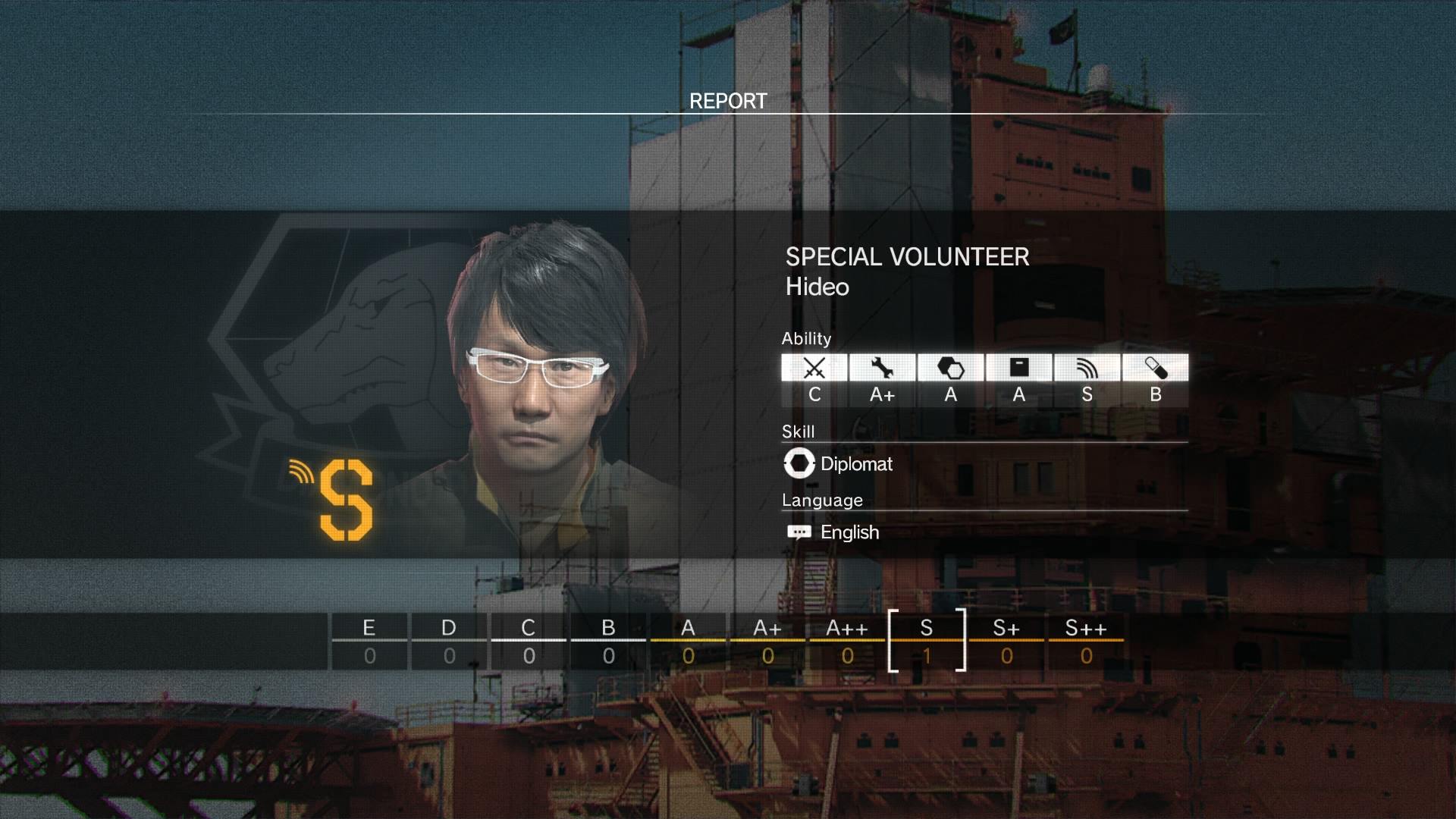
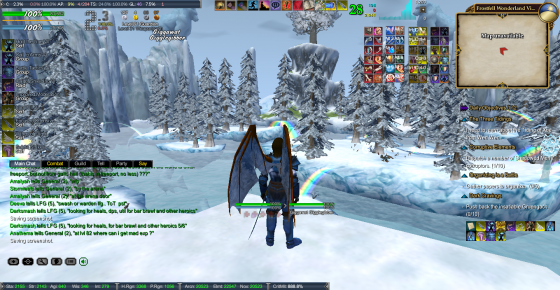
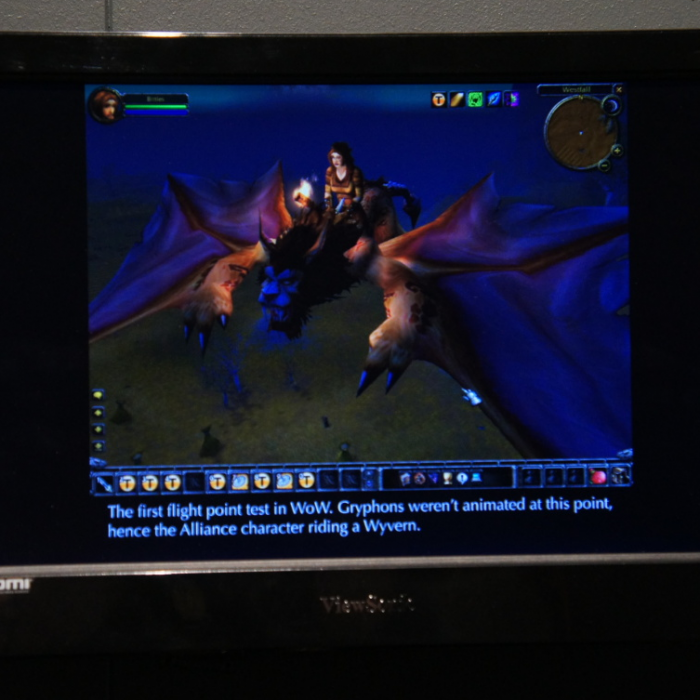 Throwback Tuesday: Oldest World of Warcraft Screenshots .
Throwback Tuesday: Oldest World of Warcraft Screenshots .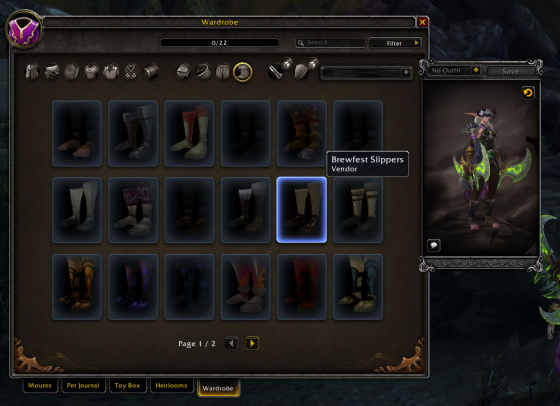 Armor, Transmog and You in Legion .
Armor, Transmog and You in Legion . Frozen Free Fall: General Gameplay Tips
Frozen Free Fall: General Gameplay Tips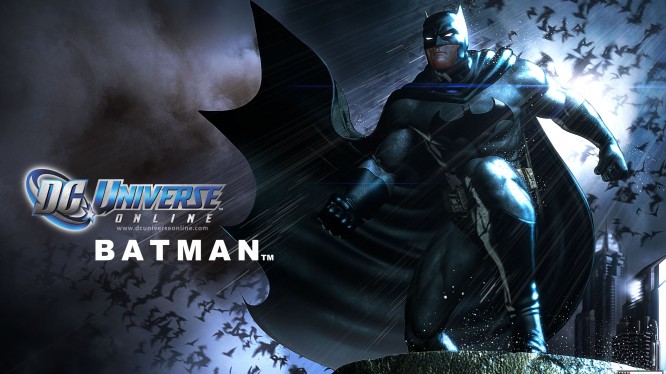 FAQ: Which MMO NPC Would You Take on a Date? .
FAQ: Which MMO NPC Would You Take on a Date? .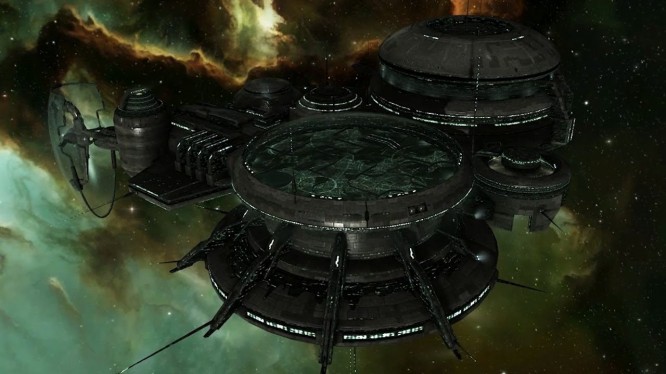 Blogger Bonanza: What does a MMO owe the player? .
Blogger Bonanza: What does a MMO owe the player? .